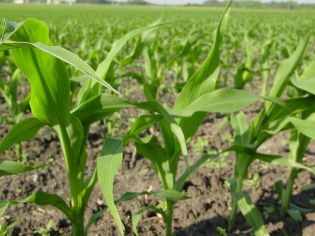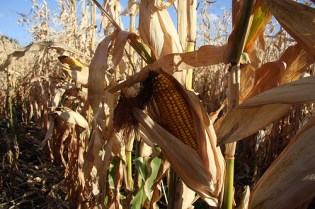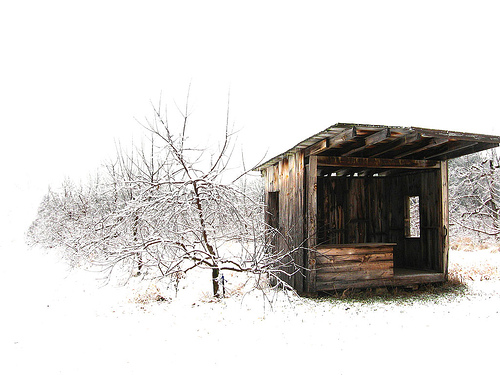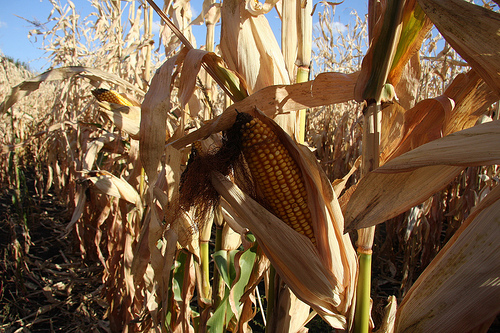
This spring, commodity farmers will plant more corn, soy, and wheat than they have since World War II.
If you want to understand the state of American commodity agriculture at the moment, you need only read this recent Bloomberg article. It begins:
U.S. farmers will plant the most acres in a generation this year, led by the biggest corn crop since World War II, taking advantage of the highest agricultural prices in at least four decades.
They will sow corn, soybeans and wheat on 226.9 million acres, the most since 1984, a Bloomberg survey of 36 farmers, bankers and analysts showed. The 2.5 percent gain means an expansion the size of New Jersey, as growers target fields left fallow last year and land freed up from conservation programs.
According to the article, American farms brought in a net income of over $100 billion last year. As farmer Todd Wachtel told Bloomberg, “There is unlikely to be any ground that won’t be planted this year … Farmers know that they have to plant more when prices are high because they may not last.”
Considering the fact that the USDA is already estimating a drop in farm income between this year and last, that’s probably true. But even then, the USDA puts this year’s farm income estimate at $15 billion above the 10-year average. So the good times just might stay a while.
As a result, you’ll be seeing more articles like this one in the Washington Post which suggests that even some farm-state representatives, Rep. Tim Huelskamp (R-Kan.) in particular, are calling for reduced farm subsidies. Of course, the Post wrote the same article last year — also featuring Huelskamp — so it’s wise to take this kind of story with a grain salt.
There is, however, a very high-profile politician calling for deep cuts to farm subsides. President Obama is seeking a whopping $32 billion in cuts over 10 years to farm programs in his just-released 2013 budget. But like Huelskamp’s, the president’s ideas for farm subsidies have little chance of being enacted — the process is determined by a handful of farm-state senators and House members; the administration’s budget is really fodder for Obama’s reelection campaign. Still, it’s a bit of a sea change when campaigning against farm subsidies (much less ethanol subsidies) is considered electoral gold.
This may be why there was an attempt by Democratic Sens. Max Baucus (Mont.) and Kent Conrad (N.D.) to sneak through the crop insurance expansion, and perhaps the entire Farm Bill, by attaching it to the just-agreed-to and must-pass payroll tax cut extension (according Red River Farm Network, however, Senate Agriculture Committee Chair Sen. Debbie Stabenow (D-Mich.) says it’s Na Ga Ha).
Now, as for those record-high farm income numbers, rural America can use some good news, and I don’t begrudge anyone’s economic success (well, maybe this person’s). Still, it’s worth keeping in mind that the vast majority of the corn — perhaps up to 70 percent — isn’t eaten by people, but is destined for livestock or car engines. Corn and soy, whether for food, fuel, or fiber, are basically grown as an industrial product.

Photo by Alternative Heat.
The problem is that corn and soy are not just any industrial products. There is a cost to plowing under all the “available” land. And Congress — despite its decades of support for “fencerow to fencerow” planting — started to acknowledge that cost when it increased funding for agricultural conservation programs and even created a major new one in the 2008 Farm Bill. These programs encourage farmers to put land aside or to use more ecologically friendly growing practices whether for wetland protection, anti-erosion purposes, or for other environmental benefits.
Which gets us to the great irony of this year’s Farm Bill debate. For all the excitement among deficit-cutters and farm subsidy critics over the end of the “direct payments” program — whereby farmers get paid whether they grow anything or not — there’s the fact that those payments came with conservation requirements attached. And right now, no one wants to attach requirements to any other kind of farm subsidy — in fact, they want to reduce or eliminate the conservation programs entirely.
These programs don’t just stop erosion. They protect water quality (by requiring buffers to absorb pesticides and excess fertilizer or even requiring farmers use certain kinds of techniques that reduce fertilizer use) and enhance biological diversity. But with the “strings” cut, all that becomes voluntary. And because farming is prone to bad years too, most farm owners won’t give up income potential to conserve natural resources simply out of the goodness of their hearts.
Plus, there are benefits to farm conservation programs that many people didn’t even realize. NPR has a great story that explains how agricultural conservation in the Midwest and Plains states is key to the survival of — wait for it — honeybees. It turns out that commercial bees spend a good chunk of their time in North Dakota. Why? Here’s NPR’s Dan Charles:
It’s one of the few places where thousands of colonies of bees have been able to graze happily. A big reason is a government program, the Conservation Reserve Program [CRP], which has been especially popular in North Dakota. Under this program, the federal government rents land from farmers and sets it aside, taking it out of crop production to conserve the soil, save water, and support wildlife.
Flowers bloom on that land — alfalfa, clover or wildflowers — all summer long. It’s just what bees need.
But that floral feast is shrinking. This is where those high corn prices come into the story. Farmers who used to put their land into the conservation reserve are having second thoughts. Corn is more profitable.
Making matters worse, there’s less CRP money to go around. According to Brownfield, the USDA reported that there was a record enrollment in the conservation program this year as farmers lined up to put aside farmland for conservation. But 40 percent of the 19 million acres of land farmers offered to protect was turned down because the government could only afford to accept 10 million acres into the program. If the farm-state representatives in charge of this year’s Farm Bill have their way, this problem will only get worse.
That’s because their hope is to expand the federal crop insurance program to replace the direct payments program. Crop insurance does not currently have any conservation requirements — and it won’t in the future if USDA Chief Tom Vilsack has anything to do with it. So the equation of high crop prices plus less money for conservation programs plus the elimination of direct payments — the only program that had conservation requirements — equals what? Let’s just say that it’s math even I can do.
It’s an ugly result — and not one even the folks in charge of pushing through the Farm Bill seem to want to face publicly. That may be one reason why we’re seeing stuff like the Baucus maneuver I referenced above. In my view, if these changes to farm programs go through, we will be well on our way to fully inflating a destructive Big Ag bubble to replace the housing bubble of the last decade. And I don’t see how that is good for anyone.




